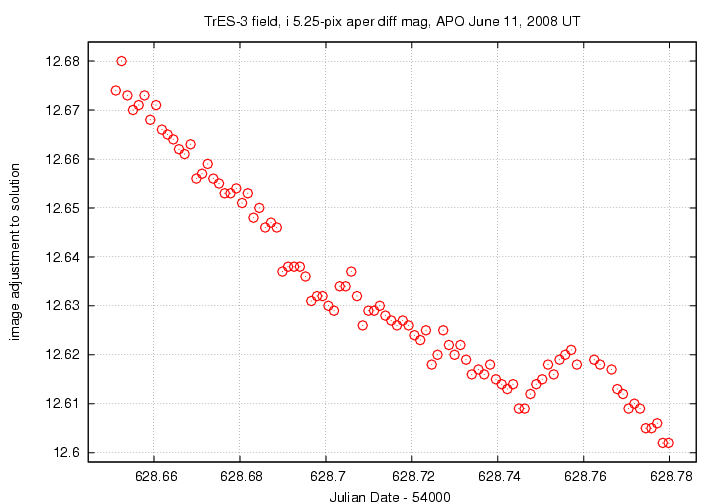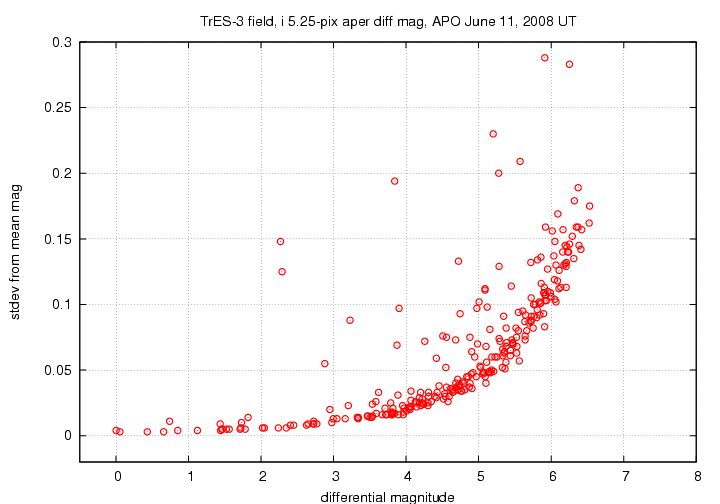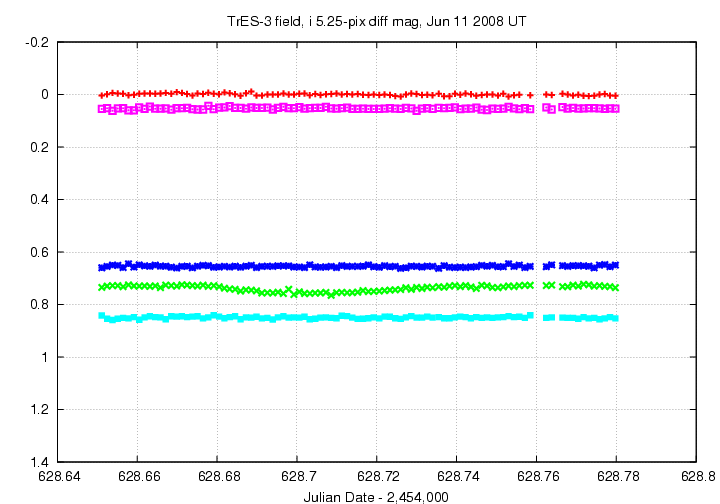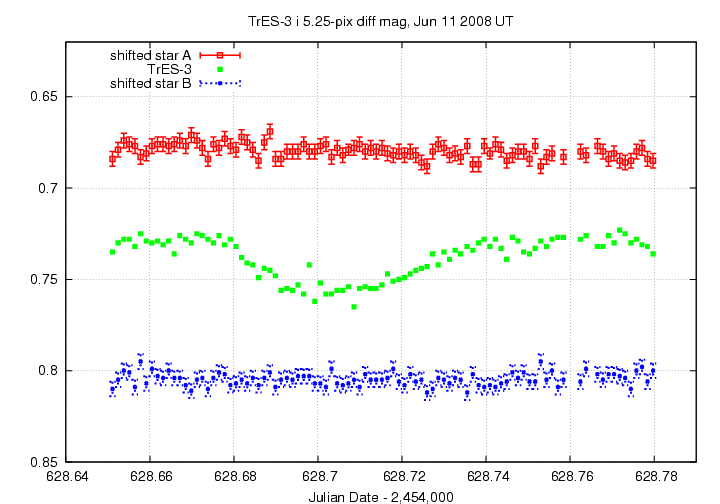
On the night of UT June 11, 2008, the SDSS Photometric Telescope ("PT" for short) took a series of exposures of TrES-3. We detected both ingress and egress, at roughly the times predicted.
Notes from the night
This is a chart of the field. TrES-3 orbits the is the bright star indicated by the crosshairs. The star labelled "C" will appear in later graphs.

The host star of TrES-3 has a magnitude V=12.40 according to TrES-3: A Nearby, Massive, Transiting Hot Jupiter in a 31-Hour Orbit .
Following the procedures outlined by Kent Honeycutt's article on inhomogeneous ensemble photometry, I used all stars available in each image to define a reference frame, and measured each star against this frame. You can find the software package used to do the ensemble photometry online; it's free!
The night was pretty good. The graph below shows the amount by which instrumental magnitudes from each image needed to be shifted to match the ensemble reference. On a clear night, this graph would show a straight horizontal line.

Below is a graph of the scatter in differential magnitude versus magnitude in the ensemble solution.

TrES-3 is the star at differential mag 0.74; it shows a small excess of scatter than neighboring stars of the same brightness. The "noise floor" in these measurements is about 0.003 mag -- pretty good. Many of the outliers in the plot above are real variable stars (which were removed from the ensemble solution).
Below are the light curves for the target (green symbols) and four comparison stars in the field.

In this closeup, I have shifted the data for two comparison stars to move them closer in magnitude to the target.

My eyeball estimate for the ingress is 628.68. The egress is harder to pick out, because the return to original brightness is more gradual, and because there's a mini-dip after an initial return to the original level; that's probably just noise, but it might be the real egress. My estimates are 628.74 (first return to original level), or 628.76 (after the mini-dip).
Justin's notes indicate that ingress should have occurred at 628.681, at the same time as my eyeball estimate. The egress was predicted to occur at 628.738, at the time of my first possible egress.
The fact that the predictions match the observations pretty well suggests to me that Justin is using a new ephemeris for this system. In the past, I have seen small systematic differences between my eyeball estimates and the predictions.
You can grab the measurements for your own analysis. Below is a table with three flavors of time, plus the differential magnitude of the target and an estimate of the uncertainty in each measurement. I show the first few lines of the file to give you an idea of its format.
# Measurements of TrES-3 made with APO PT, Jun 11, 2008 UT. # Each exposure 30 seconds long in SDSS i-band; # Tabulated times are midexposure (FITS header time - half exposure length) # and accurate only to +/- 1 second (??). # 'mag' is a differential magnitude based on ensemble photometry # using a circular aperture of radius 5.25 arcseconds. # # UT day JD-2,450,000 HJD-2,450,000 mag uncert Jun11.65112 4628.65112 4628.65395 0.735 0.004 Jun11.65245 4628.65245 4628.65528 0.730 0.004 Jun11.65380 4628.65380 4628.65663 0.728 0.004
Last modified 06/30/2008 by MWR.